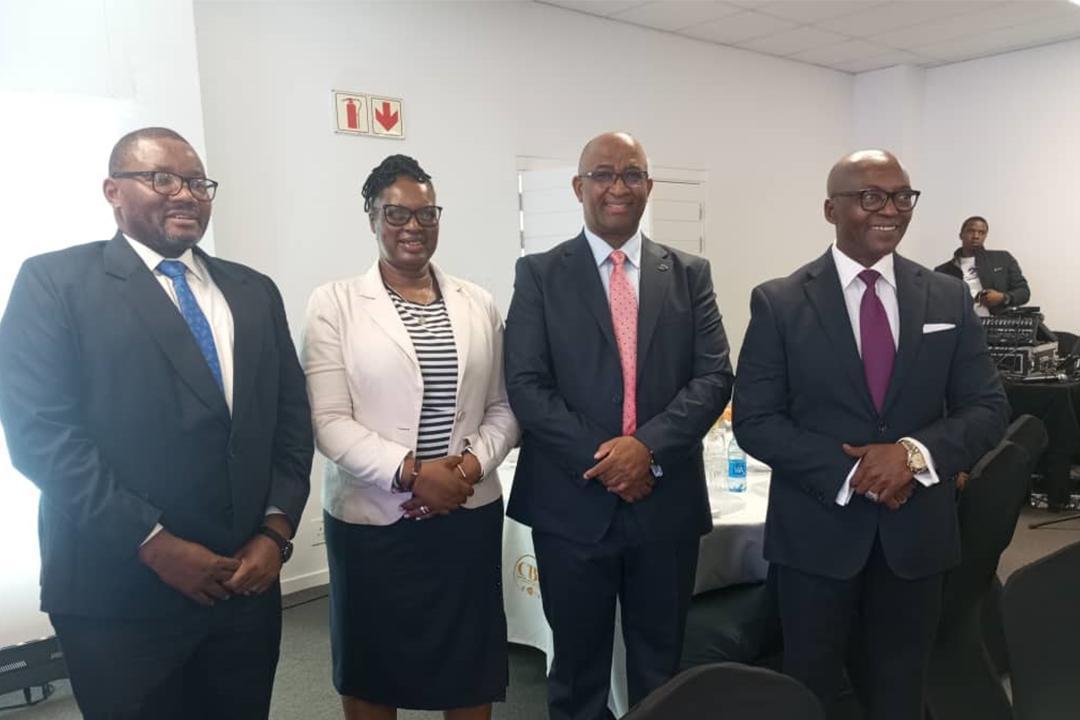Africa-Press – Eswatini. Boardroom bosses, money minds and policy shapers packed the Central Bank of Eswatini Complex this morning, and no one was late to class.
At exactly 8am, the Governor himself, Dr Phil Mnisi, stepped up to the mic with the nation’s economic compass in hand.
With a sharp gaze and calm authority, Dr Mnisi delivered this year’s Governor’s Annual Monetary Policy Statement under the theme: “In pursuit of prudent monetary policy in times of uncertainty due to global trade disruptions.” And if the title wasn’t enough to set the tone, the 50-slide deep dive into Eswatini’s economic outlook surely did.
Speaking to an audience that included top CEOs, government officials, economists, and financial stakeholders both in person and via livestream, Dr Mnisi painted a picture that was equal parts cautionary and confident.
He warned that the global economy remained on shaky ground, with ripple effects from geopolitical tensions and trade fragmentation threatening developing economies. But there was no doom and gloom in his tone.
Instead, Dr Mnisi declared that Eswatini’s economy was projected to grow by a robust 7.9% in 2025, a spike driven by major public and private sector investments, especially in energy and dam infrastructure projects. He noted that this growth would moderate to 5.0% in 2026 and further to 3.3% by 2027, reflecting the natural easing after an investment boom.
“While global headwinds persist,” the Governor explained, “we remain steadfast in deploying a mix of monetary tools to safeguard price stability and support sustainable economic growth.”
‘Monetary Strategy in Motion’
Dr Mnisi pointed to stable domestic inflation, strong foreign reserves, and a financial sector that had shown “remarkable resilience” in turbulent times. He reminded the nation that the bank’s monetary policy was more than just a lever, it was a shield against volatility. The bank, he stated, had maintained the discount rate at 7% since its last meeting and would remain vigilant on inflationary trends.
On the hot topic of public debt, the Governor did not shy away. He acknowledged that the ratio stood at 37.8% of GDP, calling it a matter of concern. He warned that growing spending pressures and a high nexus with the financial sector demanded close monitoring and fiscal discipline.
‘Digital Lilangeni, Real Progress’
Eswatini’s digital ambitions also made the agenda. Dr Mnisi confirmed continued participation in Project Sunbird, a collaborative effort with regional peers to explore cross-border central bank digital currency (CBDC) applications. He also referenced the growing interest in crypto-assets and emphasized regulatory readiness through sandbox testing.
On the ground, though, it wasn’t just the tech talk that turned heads. The Governor highlighted the successful issuance of 146 new guarantees worth E35 million under the Small Scale Enterprise Loan Guarantee Scheme, proof, he said, that the bank’s developmental finance policies were not just theoretical.
‘We’re Not Just Talking Numbers’ – Business Eswatini CEO
As the mic was passed to the floor during the Q&A, Business Eswatini CEO E. Nathi Dlamini took a moment to thank the Governor for what he called “a timely and tactical address.” Dlamini noted that while Eswatini cannot escape the shadows of global tariffs and slowdowns, the local financial system had become faster, safer, and more efficient. “We’re not just talking money,” he said, “we’re reshaping the way it moves.”
Conclusion: Steady Hands in Stormy Skies
The Governor wrapped up with a message of composure: “The world is uncertain, but we will continue to navigate it with prudence and purpose.” For a small, open economy like Eswatini, such stability is no small feat.
And with that, the country’s top banker stepped down from the podium, leaving behind a room full of decision-makers ready to take notes not just on paper, but in policy.
For More News And Analysis About Eswatini Follow Africa-Press







